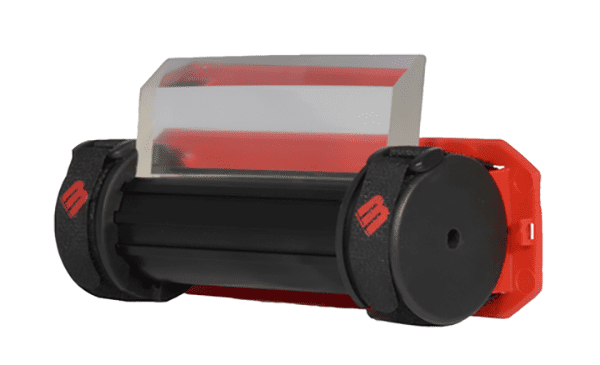
As we saw last week, MagnetoSpeed is branching out from chronographs into other firearms-related gear. Next up for them is a product designed to solve the frustrating difficulty of target impact verification at long ranges. Employing bright LEDs redirected by a flexible fiber optic slab, the T1000 Target Mounted Hit Indicator provides clear hit (and near-miss) confirmation at any range.
https://www.youtube.com/watch?v=PAuxN0-thns
On the first outing with the T1000, Chris and I hit the range — a range in both the shooting and the cows sense, actually — and slapped the Hit Indicator on a steel gong at 430 yards. Elapsed time from opening the box to ready-to-use, installed unit: about 30 seconds.
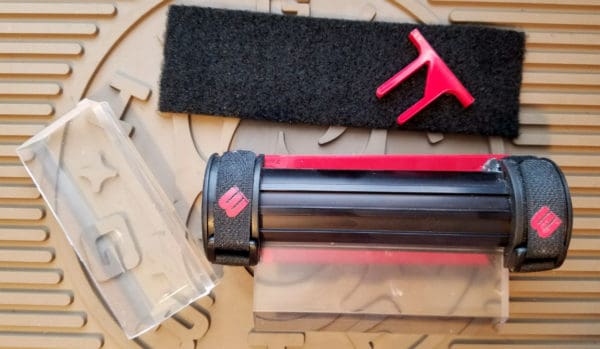
Inside the box was the assembled unit, an extra rubber reflector, two strips of self-adhesive, loop-side Velcro, and a red plastic alignment tool to helps aim the T1000’s 18° beam towards the shooter.
Stick the Velcro to the back of the target, stick the T1000 to the Velcro, and you’re good to go. Depending on target angle and shape plus the location of the shooter, the Hit Indicator may be better-suited to a location on top, bottom, or sides. It functions fine in any orientation.
There are only two real considerations: the shooter must have line-of-sight to the reflector, angled so the shooter is within its 18° beam for best visibility, and the T1000 itself should be shielded by the target from bullet impacts.
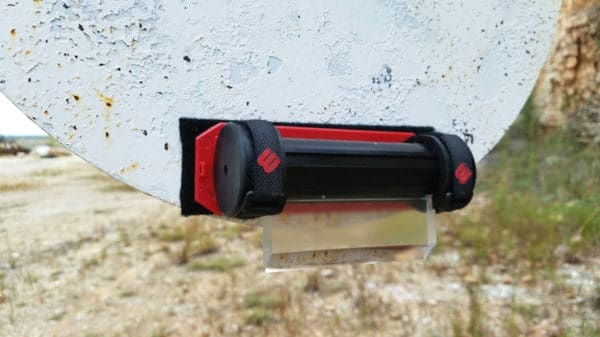 The round body of the Hit Indicator is strapped into its mount by two Velcro straps, allowing for quick and easy reflector angle adjustment.
The round body of the Hit Indicator is strapped into its mount by two Velcro straps, allowing for quick and easy reflector angle adjustment.
Fear not, bullets pass right through the flexible rubber reflector while doing very little damage. Sort of like those self-healing targets, a smaller-than-bullet-diameter path is made and the rubber closes up on it afterwards.
The Hit Indicator above was installed at a PRS match and, after 600 rounds on target, suffered only two hits to the reflector. As the reflector should be able to handle a couple dozen hits before needing replacement, they should last a long time. Replacement cost is just a few bucks, and they can be swapped in the field without tools in a few seconds.
To disassemble the T1000, simply slide off the rubber end caps and push the electronics core out of the aluminum housing. Two AA batteries power the T1000 for a year on standby or about 2,500 hit indications. It’s also waterproof, so it can be left on outdoor targets as desired.
Simple toggle switches allow the owner to change the unit’s operating mode. Adjust sensitivity, miss indication, and flash indication behavior to your liking.
An accelerometer and a microphone confirm hits on target, resulting in bright red flashing light.
A near miss, confirmed by the unit primarily via its microphone catching the supersonic crack of the bullet whizzing by or that plus nearby bullet impact sound (e.g. on the target stand, a rock, etc.) without resulting target motion, results in bright yellow light. Miss indication can be turned off if desired, but it’s helpful in scenarios where missed bullet impacts aren’t visible due to the terrain (or lack thereof) around the target.
 On the range, the T1000 performed as advertised. With the naked eye, if you can see the target you’ll probably see the Hit Indicator blinking brightly. With a magnified optic — whether a rifle scope or spotting scope — it’s extremely bright and obvious. You’d have to willfully look away to miss the flashing.
On the range, the T1000 performed as advertised. With the naked eye, if you can see the target you’ll probably see the Hit Indicator blinking brightly. With a magnified optic — whether a rifle scope or spotting scope — it’s extremely bright and obvious. You’d have to willfully look away to miss the flashing.
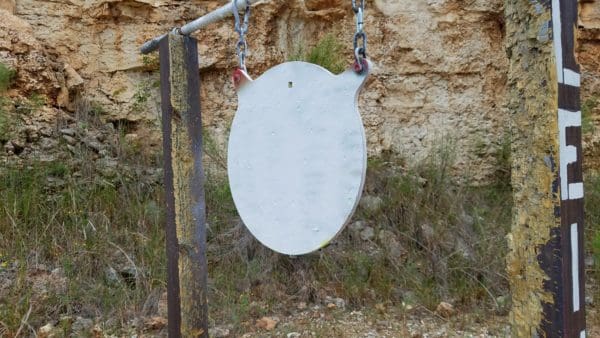 While the indicator never failed to confirm hits from .223 or 6.5 Creedmoor, it did miss a near miss. As the round impacted dirt off to the side of the target, I don’t think the microphone was able to pick up enough supersonic crack and/or a loud enough bullet impact to alert to it. Rounds that whizzed past the target resulted in yellow flashing. We didn’t hit the chain or stand, but on my next range trip I’ll do that on purpose with some frangible 9mm to see what the T1000 has to say.
While the indicator never failed to confirm hits from .223 or 6.5 Creedmoor, it did miss a near miss. As the round impacted dirt off to the side of the target, I don’t think the microphone was able to pick up enough supersonic crack and/or a loud enough bullet impact to alert to it. Rounds that whizzed past the target resulted in yellow flashing. We didn’t hit the chain or stand, but on my next range trip I’ll do that on purpose with some frangible 9mm to see what the T1000 has to say.
Overall, I love this thing! They’ll definitely be popping up at PRS matches and shooting ranges soon (Best of the West outside of Austin has had T1000s on its 1,000 yard targets for a couple months now). In fact, I can envision these becoming mandatory in the Precision Rifle Series and other forms of long-range competition involving steel targets, as it’s all too easy to miss an impact through a spotting scope. And a missed hit could be the mistaken difference between a first- and second-place finish.
Even as a hobbyist, the T1000 is relatively affordable and would come in handy for day trips to public shooting land or visits to shooting ranges that don’t have hit indicators but would allow you to stick your own on. It’s reliable and simple to use, and it works great.
Specifications: MagnetoSpeed T1000 Target Mounted Hit Indicator
Power: Two AA batteries, good for about 2,500 hits
Settings: Adjust sensitivity, flash behavior and duration, cycle miss indication on/off
Installation: Velcros to the back of any steel target large enough to shield it from hits (additional stick-on Velcro is available at any hardware store)
MSRP: $150
Ratings (out of five stars):
Utility * * * * *
Visual confirmation of bullet impacts on steel targets at long ranges can be hit-or-miss, depending on all sorts of variables from weather conditions to caliber choice, range, optics, eyesight, and more. Likewise, auditory confirmation is unreliable to impossible depending on range, caliber, weather conditions, ear protection, gunfire from other shooters, target design, terrain, hearing acuity, and more. Plus, it’s slow (3 seconds on up for the sound to return if you’re past a thousand yards). The T1000 provides instant, glaringly obvious, reliable confirmation of hits on target, which is hugely useful.
Function * * * * *
Hit detection is reliable and accurate, and can be tuned for sensitivity by the owner, if needed. Near-miss detection is optional and won’t be 100% reliable, but doesn’t have to be. It’ll indicate ~2,500 hits before the two AA batteries need replacement. Inexpensive rubber reflectors are easy to replace as needed. And it’s waterproof, so Hit Indicators can stay on outdoor targets if desired.
Overall * * * * *
Awesome. MagnetoSpeed T1000s are bound to begin showing up everywhere there’s steel at long ranges.

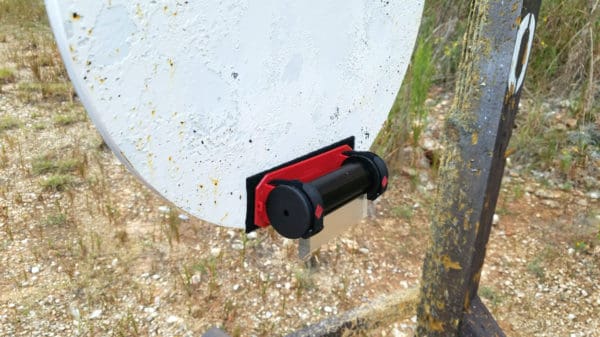
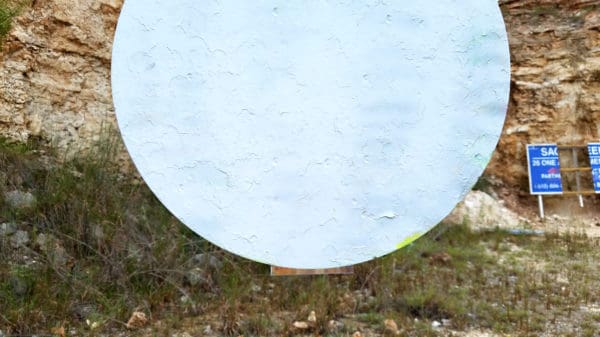
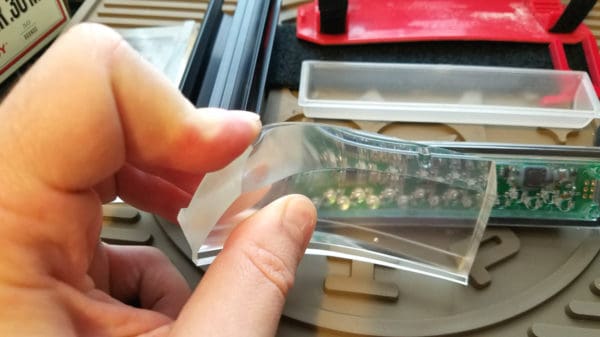
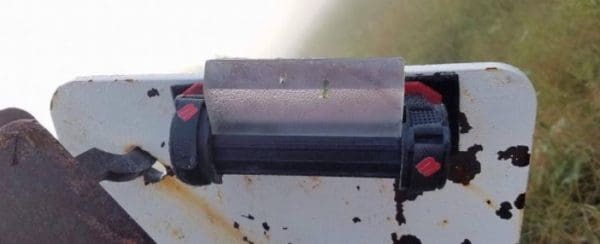
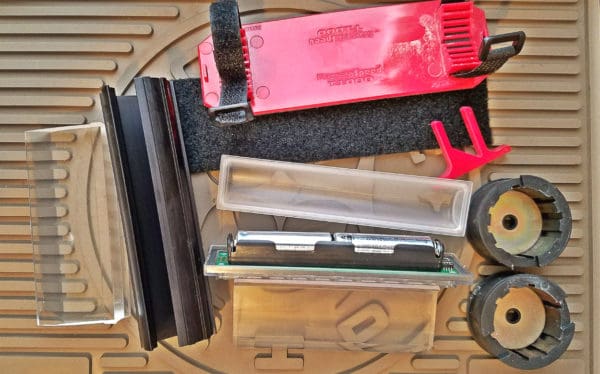
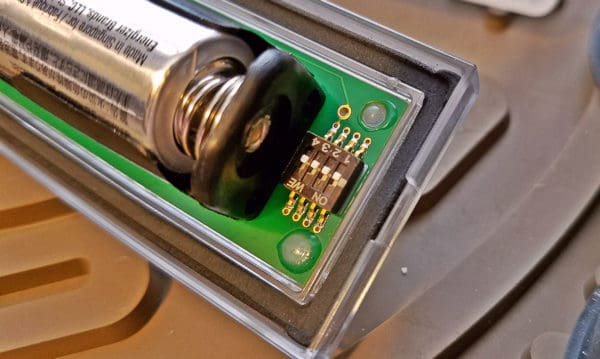


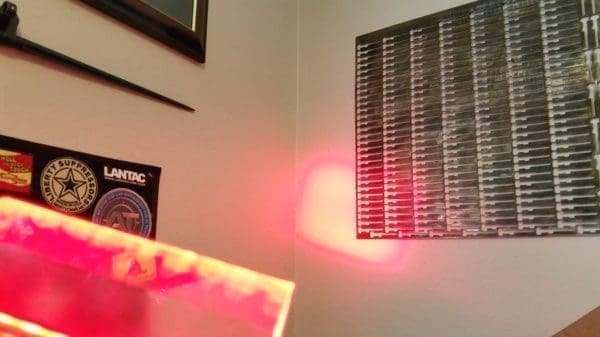
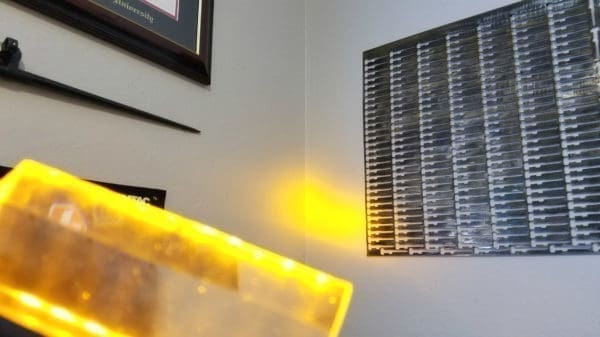
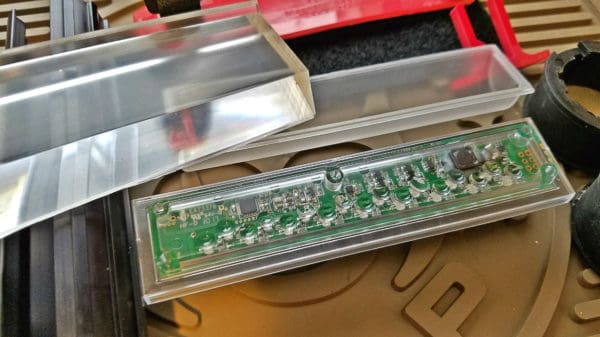



Like it.
How’d you think it would do in a little bit of weather?
Fine. It’s waterproof and made to stay outside in most conditions. I believe the ones at Best of the West here have lived on their targets for a couple of months straight. Certainly you’d be better off removing them and bringing them indoors when not in use, but they’re built to handle weather exposure.
Thank you. Mainly worried if it would survive a light rain while/if you needed to sprint down to the target to retrieve it.
hmm pretty neat idea.
Why use velcro? Why not a magnet?
The vibration of the hit would likely knock it off…
Most strong magnets (neodymium) are very brittle, and all magnets can shed their magnetic properties with heavy striking. Plus, most magnetic fields can interrupt sensitive electronics.
They tried magnets and even using a ton of crazy strong, rare earth magnets didn’t work. The flexing of the steel and the vibration would pop the hit indicator off. If you look at an AR500 steel target getting hit in slow-mo, there’s actually a lot of flexing wave action that propagates through it and MagnetoSpeed found out that they needed an attachment surface that could bend and flex with the target. Velcro with the industrial outdoor adhesive on the target side (like what’s hot-linked in the specifications section) works extremely well.
A near miss is a hit, Just saying
Near miss is still a miss. Sorry. What you’re just saying is nonsense.
What’s a near hit?
The same dang thing. It’s like flammable and inflammable or habitable and inhabitable (except “near hit” isn’t even a real term in the first place). They mean the same thing. Just look up “near miss” in a dictionary and you’ll see something like:
“* a bomb or shot that just misses its target.
* any attempt or shot that just fails to be successful”
Neat.
Even better if it worked with target rings that flashed a different color depending on how far you missed the bulls-eye.
That would kick ass on a 1,000 meter range…
I wish they would have spent the time devopling this gagdget on making the software app for the msxfr adapter better.
I wrote to them several time requesting improvement features. The easiest one was to access the log archieve.
This is why I switched to the labradar.
This is not a review of a chronograph. Did you read the word “MagnetoSpeed” and literally not anything else whatsoever? LOL
His was not a comment solely about a chronograph. Did you read the word “msxfr” and literally not anything else whatsoever? LOL
I’m pretty sure he’s aware that this article isn’t about their chrono. He’s saying instead of devoting time/money into developing what he refers to as “this gadget” (ie, the hit indicator), he wishes they had instead improved their other products, which he finds fault with. His was a post about the company as a whole and their priorities, including this device. Maybe a little less snark about reading comprehension when you’d have to be a REAL dummy to read his whole comment, and get the impression he thought this article was about their chrono.
Yeah, you’re definitely right. It’s kind of a simplistic view of product development but you’re totally correct. I definitely scanned that comment while on a phone call. Apologies. Bad form.
You drove the measly 430yds? This is why people are so unhealthy these days;-)
Easy for Action Physical Man to say! But…hell yes. For time reasons if nothing else. But if you want to walk a half mile on a hot, humid Texas day to look at a target be my guest haha
That thing looks nothing like Robert Patrick! 😉 Unless he has shape shifted?!
I thought this thing was awesome reading through the write up. Then I saw the price. Not so enthused now.
Seriously, someone with a 3D printer and a few off the shelf electronics parts could make one for less than what they’re asking. Hell, it could probably even be wireless.
Guess I’ve got a new project for days off…
Wireless? You’ve lost me.
No need for the bright flashing light. Just have a receiver (or if you’re really talented an app) beep or blink. This would eliminate all material not guarded by the plate.
My point is, $150 is way too expensive for what is basically a cheap mic, accelerometer, and a flashing light controlled by a basic micro controller.
This thing would be larger and far more expensive with a WiFi antenna capable of 800 yards range let alone a couple thousand. You could see this hit indicator’s light through a spotting scope from three miles away. Are you suggesting throwing a sim card and cell service in these units? Either way, every single spotter at the PRS match needs to download the app ahead of time and connect it to a specific target? Or somehow one spotter that moves with the shooter as they progress through the course is going to have a single app that’s connected to a bunch of different targets? I’m thinking a flashing light is the simple, clear, obvious, perfectly-functional choice with zero hassle of trying to connect mobile devices to indicator units and all the headache that entails. Again, this thing was 30 seconds from opening the box to having it fully functional. Worrying about connecting to it and having an app and making sure my phone is charged while leaving the screen on all the time plus having to look at my phone while I’m shooting and etc etc etc seems like a huge PITA. I can easily spot my own hits with the flashing light method without having to break my cheek weld. And a spotter can spot the hits without having to come off the scope and stare at their phone.
This drives me crazy.There is always someone who has to make a comment like this on every product no matter who makes it. If you can do it, go for it and don’t just leave some snarky comment online. Lets see where your sales price ends up after you pay the overhead for a production facility, employees’ salaries, research and development costs, packaging costs, marketing budget, product liability insurance, patent attorneys’ fees and actually want a little profit for yourself. That’s just what I can think of off the top of my head having no idea what actually goes into manufacturing a product, but I know it’s at least that much. So just because you can make a crappy copy in your garage that will barely work, if at all, for your specific application, doesn’t mean your complaints about the sales price have any validity at all. Rant over, just tired of always seeing some jackhole that says “Oh I could make that in my garage for half the price” every-time someone tries to offer a new product at a little more than you want to pay for it.
I could make a rant better than this one in my garage, for a tenth of the cost!
LOL
Sitting here grinning like a helmet wearing window licker after watching the bullet swirl.
Love shooting long distance on humid days.
Werd! The bullet trace was freaking great that day. Only wish we could have shot long range.
You need something to tell you that you hit steel?
Something wrong with your ears? I thought that was most of the point of a steel target.
At 1000yrds with a steel torso and my suppressed 308 rifle I can hear the hits, but if someone else is shooting at all near me I can only visually confirm hits. On day or through a breeze of dust that gets tough.
Nothing wrong with my ears, Jason. Because I wear ear plugs when shooting. This can make it hard to hear steel targets ring when they’re out past a few hundred yards.
As mentioned, sometimes there are other guns being fired in my general vicinity.
That Jason, see the “Utility” section of the ratings for more info on this vs. listening for hits. Not sure if you’ve ever shot long range, but once you get past like 750 yards hearing targets can be a crapshoot depending on caliber and wind conditions and terrain and ear protection and other people shooting and the design of the target, etc etc etc. Plus, it’s a slow way to confirm a hit. Stretch it out to 1,500 yards and now you’re waiting 4 seconds IF you hear the hit at all. The light if significantly more obvious and it’s instant. Depending on the range and conditions, a PRS match might choose to only put these on targets beyond a certain distance, as auditory AND visual confirmation of hits can become really difficult.
This is pretty easy to make for a few $ if you’ve much electronics experience. I built one a few years ago that was very similar to this without the mic. Sure, not everyone has that skill set but $150 is off the charts. Really?
So how much do YOU sell them for? Where can I order couple of them? I don’t know much about electronics. (My biggest project so far was a PID controller for my bullet casting pot.) And I would love to get something like this cheaper.
Nifty, I built something like this using an arduino nano and some sensors. Their price is steep compared to mine, but I have to say their solution to the indicator light is damn good. Simple, durable, and not a lot of places to fail. I have to give them a big thumbs up on that.
Mine was less slick, but ran about $45 and ran off a 9v battery.
I suspect they got theirs dialed in better than mine for discriminating between an actual hit and things like gravel being kicked up by a near miss and bouncing off the thing. O
Comments are closed.